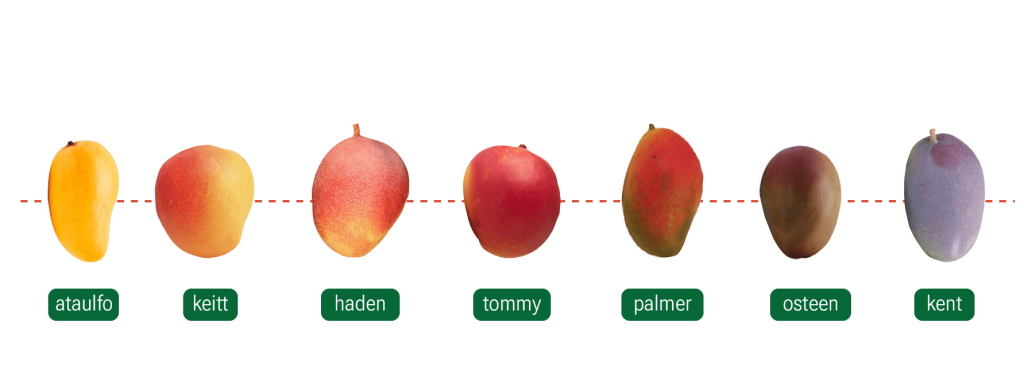Brazilian fruit exports hit a historical record in 2021. The Brazilian farmers sent 1.2 million tons of fruit to the world. Among this impressive result, there is a global passion. Last year, mango was the Brazilian most exported fruit, with 272.5 thousand tons shipped worldwide.
Brazilian mangoes are already famous for their flavor, texture, and durability, but there is still much to find out about it. Although some supermarkets only name them “mango,” those fruits, on the shelves, can have many shapes, tastes, and colors. To be more specific: so far, there are more than 1,600 varieties of this fruit identified worldwide. And Brazil holds hundreds of them.
The Mangifera indica is a tropical fruit tree native to India and Southeast Asia. In the 17th century, the Portuguese brought some species to Brazil, where the plants found ideal climate and soil conditions to grow and their fruit became popular. Now, the world is not only interested in its taste but also its health properties: mango pulp is a source of vitamins A, B, and C, in addition to fiber and minerals such as phosphorus, potassium, calcium, iron, and magnesium.
In Brazil, the largest commercial production areas are found in the states of Bahia, Pernambuco, São Paulo, and Minas Gerais. Eaten fresh, in salads, smoothies, desserts, the diversity of mangoes allows the world to taste its richness in every imaginable way. We have selected 7 of them to give you a taste of the possibilities.

Tommy Atkins
This is the most cultivated mango in Brazil and the most exported worldwide. Its pulp is firm, juicy, and has a medium fiber content. The fruit has a good shelf life, and even if harvested too soon, it ripens well. With a thick, oval-shaped skin, it has colors ranging from yellow to orange, covered with red and intense purple.
Palmer
Before ripening, the fruits are purplish green. When ripe, they develop a dark red color. Their pulp is yellowish, firm, and with little or no fiber. Moreover, a special feature of this variety is its concentration of vitamin C: every 100 grams of this fruit has 65.5 milligrams of vitamin C.
Kent
Oval-shaped, this variety of mango is known for its creamy, fiber-free, and very sweet pulp. It can even be eaten with a spoon. The fruit weighs up to 600 grams and it is one of the favorite varieties on the French market.
Keitt
Very similar to the Tommy Atkins and Haden varieties, this mango has the advantage of being harvested later. The fruits are colorful, fiber-free, and very large, weighing up to 800 grams. When ripen, their skin turns dark red, with a yellowish pulp.
Ataulfo
This Mexican-Brazilian mango is very different: smaller, with an oblong shape and a dark yellow color. Its texture is creamy, buttery, and very delicate. This is why it may be hard to find it, but it is worth the wait for its taste and high level of vitamin C, vitamin A, and calcium.
Osteen
The shape is the main difference of this variety. The Osteen mango is oblong, with a round base and sometimes the consumer may see a small “beak” in it. It usually weighs 500 grams when ripe. Its smooth peel has a yellow background color, becoming purple when ready to be eaten.
Haden
It is believed that Haden mango is the variety that gave origin to the other mangoes found in the market, like Tommy Atkins and Palmer. The Haden mangoes are sweet and draw attention by their intense red color.